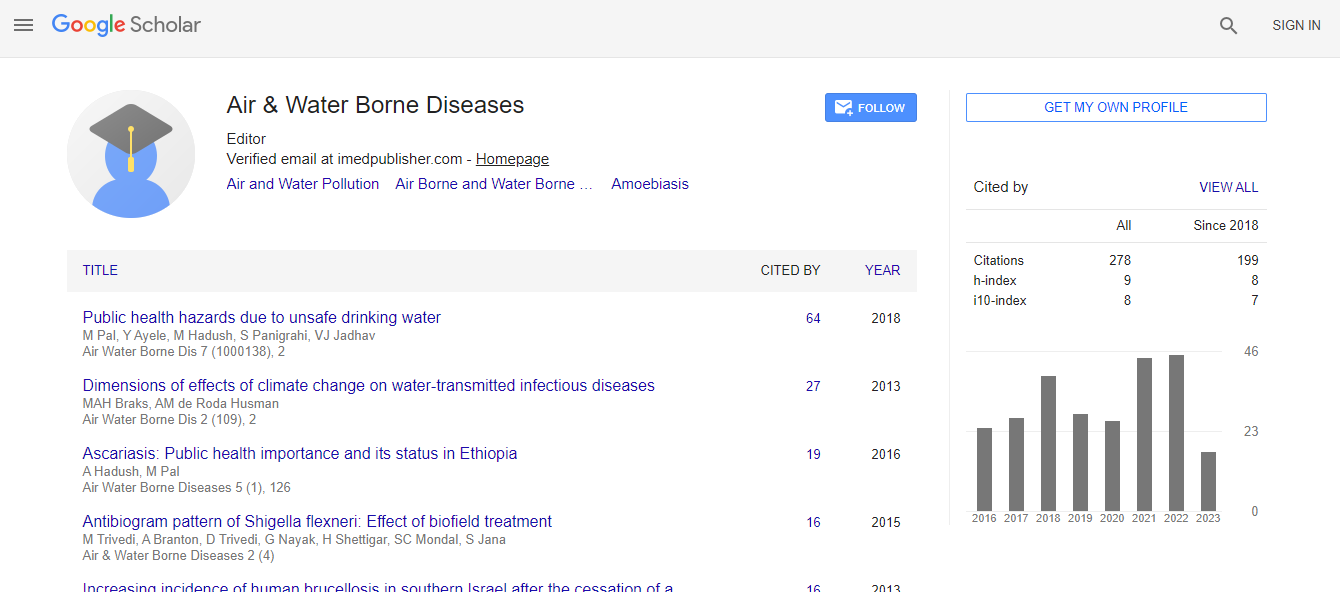Review Article
Dimensions of Effects of Climate Change on Water-Transmitted Infectious Diseases
Marieta AH Braks1 and Ana Maria de Roda Husman2*1Laboratory for Zoonoses and Environmental Microbiology, Centre for Infectious Disease Control Netherlands, National Institute for Public Health and the Environment (RIVM), BA Bilthoven, The Netherlands
2Divisions Environmental Epidemiology/Veterinary Public Health, Institute for Risk Assessment Sciences, Faculty of Veterinary Medicine, Utrecht University, TD Utrecht, The Netherlands
- *Corresponding Author:
- Ana Maria de Roda Husman
Divisions Environmental Epidemiology/Veterinary Public Health
Institute for Risk Assessment Sciences
Faculty of Veterinary Medicine, Utrecht University
P.O. Box 80, 178/80 175, 3508 TD Utrecht, The Netherlands
Tel: +31302532059/5370
Fax: +31302744434
E-mail: a.m.derodahusman@uu.nl
Received Date: June 05, 2013; Accepted Date: July 01, 2013; Published Date: July 04, 2013
Citation: Braks MAH, de Roda Husman AM (2013) Dimensions of Effects of Climate Change on Water-Transmitted Infectious Diseases. Air Water Borne Diseases 2:109. doi:10.4172/2167-7719.1000109
Copyright: © 2013 Braks MAH, et al. This is an open-access article distributed under the terms of the Creative Commons Attribution License, which permits unrestricted use, distribution, and reproduction in any medium, provided the original author and source are credited.
Abstract
Human pathogens that are water-transmitted may follow various routes, ranging from water ingestion to transmission via insect vectors. Since water-transmitted pathogens are highly influenced by climate and environmental conditions, any climate change may alter the infectious disease burden from exposure to these pathogens. Climate factors determine the number, type, virulence and infectivity of pathogens transmitted through water or vectors that breed in water, and thus may have an impact on resulting infectious diseases. In this perspective, the most important climate factors are temperature, relative humidity, UV radiation, precipitation patterns and water availability. Some indigenous species of bacteria, amoebas and algae are able to grow in aquatic environments with higher temperatures, whereas enteric bacteria, viruses and parasites that are derived from human or animal faeces are not. Increased UV radiation may result in increased inactivation of enteric pathogens, or alternatively growth, whereas increased precipitation intensity will lead to peak concentrations of these pathogens due to e.g. sewage overflow and runoff. For mosquito borne disease, high spatio-temporal variation and uncertainties in the many variables that determine their emergence preclude general projections in the future. Climate factors not only affect pathogen behaviour, but also influence human behaviour, thus stressing the need to study both the complexity of pathogen behaviour and social behaviour with respect to expected climate changes.

 Spanish
Spanish  Chinese
Chinese  Russian
Russian  German
German  French
French  Japanese
Japanese  Portuguese
Portuguese  Hindi
Hindi 